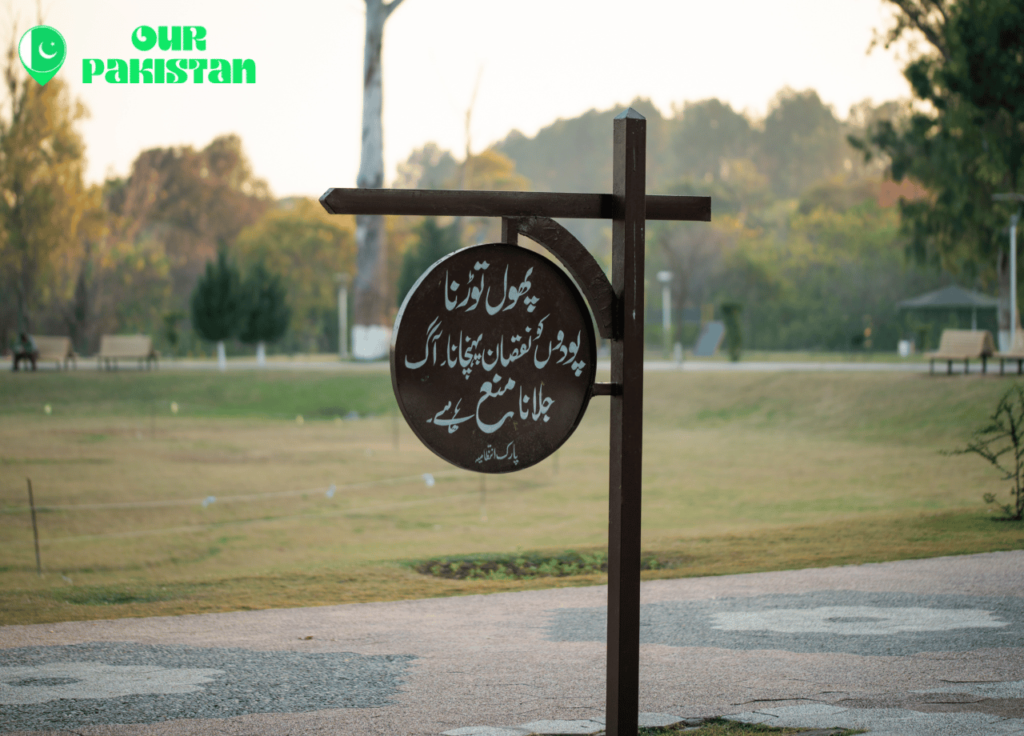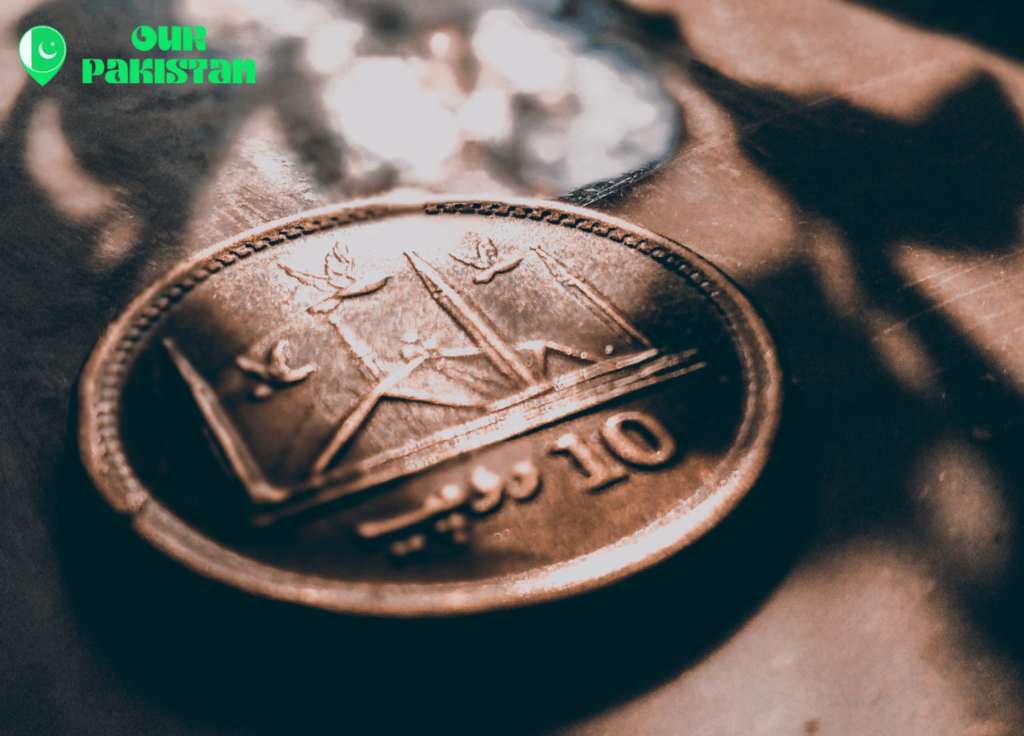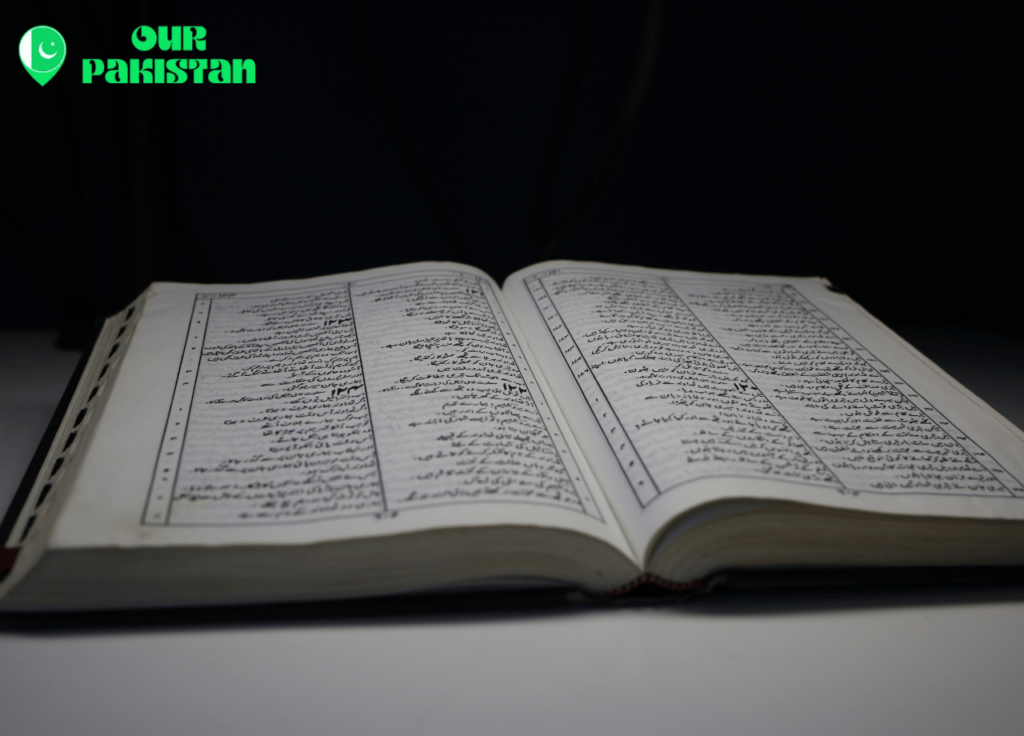Urdu, a language steeped in history and culture, bridges communities across South Asia and beyond. As a direct descendant of the Persian, Arabic, and Turkic languages, with a significant infusion of words from Hindi, Urdu stands as a testament to centuries of cultural and linguistic exchange. It’s more than just a means of communication; it’s a repository of the region’s rich literary traditions, including the renowned genres of Urdu poetry and Urdu Shayari that resonate with the hearts of millions. The importance of Urdu extends beyond its artistic expressions, serving as a vital link in the speech communities of Pakistan and India, where it holds official status and is revered for its elegance and linguistic depth.
This article delves into the origins of the Urdu language, tracing its development from its birth in the armies and markets of medieval India to its present status as a language of poetry, politics, and everyday life in Pakistan and parts of India. We explore its historical evolution, geographic distribution, and cultural significance, highlighting the unique script that captures the language’s intricacy and the key linguistic features that distinguish it from its linguistic relatives. By examining the journey from its early days to its contemporary role in Urdu literature and media, readers will gain insights into the dynamics that have shaped this language and its enduring impact on the speech communities across the region.

Origins of the Urdu Language
The genesis of Urdu is deeply intertwined with the historical dynamics of the Indian subcontinent. Its earliest linguistic influences likely commenced with the Muslim conquest of Sindh in 711, marking the beginning of a profound transformation in the region’s linguistic landscape.
As the Delhi Sultanate, established in 1206, expanded its reach southward to the Deccan Plateau, the linguistic fabric of the area began to evolve significantly. The interaction between the native languages of the newly conquered regions, such as Punjabi and Haryanvi, with the court and Sufi usages, further enriched the developing linguistic milieu. We also witnessed the Mughal Empire’s rise in 1526, which continued to patronize Urdu until 1858, solidifying its status and broadening its usage.
Linguistically, Urdu, akin to Hindi, is derived from the Hindustani language. This connection traces back to the medieval Apabhraṃśa register of the Shauraseni language, a Middle Indo-Aryan language that forms the ancestor to several modern Indo-Aryan languages. The native language of the Delhi region, Khariboli, which is the earliest form of Old Hindi, also played a crucial role in shaping the language. This interaction of Hindu and Muslim cultures during the Islamic conquests from the 12th to the 16th centuries birthed Hindustani, a composite product of the Ganga-Jamuni tehzeeb.
From the 13th century until the late 18th century, the language that would be known as Urdu was referred to by various names such as Hindi, Hindavi, and Dehlavi, reflecting its widespread use and adaptation across different regions and cultures. The establishment of Persian as the official language by the Delhi Sultanate and later by the Mughal Empire further influenced Hindustani, embedding Persian lexical items and stylistic elements into what is today known as Urdu.
The 12th century marked a significant turning point with Urdu beginning to develop around Delhi, serving as a linguistic modus vivendi following the Muslim conquests. Amir Khosrow, a major poet of this era, composed works in what was then called Hindi, illustrating the early literary use. This language, through its evolution, was variously known as Rekhta, Gujari, and eventually, Zaban-e-Urdu-e-Mualla among other names, highlighting its status as the language of the camp and later, the courts.
The transformation of Urdu from a pragmatic camp language to a rich literary language was significantly influenced by its poets and scholars. During the 14th and 15th centuries, a substantial body of poetry and literature began to be written in Urdu, marking its ascendancy as a cultural and literary force. This literary tradition continued to flourish, significantly shaping the identity and linguistic preferences of the regions where it was spoken.
In the modern era, particularly after the creation of Pakistan in 1947, Urdu was chosen as the national language, a decision that underscored its pivotal role in the cultural and political spheres of the new country. This historical journey from a regional dialect to a national language encapsulates the rich, complex history of Urdu and its enduring significance in the Indian subcontinent.
Historical Development
Early Development
Urdu’s origins trace back to the 12th century during the Delhi Sultanate when it began developing around Delhi, evolving significantly under the influence of the Mughal Empire. Known initially as Hindavi and later as Urdu, the language incorporated Persian, Arabic, and Turkish vocabulary while retaining the grammatical structure of Hindi. This period marked the emergence of Urdu as a distinguished language, with its earliest verse dating to the 15th century and a golden period of poetry in the 18th and 19th centuries.
Colonial Influence
The British colonial era brought significant changes to the linguistic landscape of the Indian subcontinent. During the 1800s, Urdu and English were declared co-official languages, leading to the integration of many English words into Urdu. The imposition of the nastaliq script as the official script during the Hindi-Urdu controversy of 1867 further entrenched the division between Hindi and Urdu, establishing rigid linguistic borders that had lasting impacts on the region’s cultural and political dynamics.
Post-Partition Period
Following the partition of India in 1947, Urdu faced a transformative era. In Pakistan, Urdu was elevated to the national language, symbolizing national unity and cultural identity. However, in post-partition India, Urdu experienced a decline as it was overshadowed by Hindi in official and cultural domains. The migration of Urdu-speaking intellectuals to Pakistan and the subsequent focus on Hindi in India led to a significant cultural and linguistic shift, with Urdu literature and poetry finding refuge and continuation primarily in Pakistan.
Geographic Distribution
Urdu, recognized for its rich historical and cultural significance, exhibits a diverse geographic distribution that spans several countries and continents. This section explores the prevalence and status of Urdu in Pakistan, India, and globally, underscoring its role as a lingua franca and a symbol of cultural identity.
Urdu in Pakistan
In Pakistan, Urdu serves as the national language and the primary medium of cultural and governmental discourse (Pakistan Language). Despite being the mother tongue for only about 7% of the population, it is understood and spoken as a second language by the majority, facilitating communication across various linguistic groups. Urdu’s adoption as the national language in 1947 symbolized unity for Pakistan, reflecting its historical role during the British colonial period. It is taught as a compulsory subject across schools, enriching its vocabulary with regional languages and enhancing its role as a bridge among diverse communities.

Urdu in India
Urdu holds official status in several Indian states and is part of a rich cultural tapestry, particularly in regions with significant Muslim populations. According to the 2011 census, there were over 62 million Urdu speakers in India, reflecting its widespread use despite the competition with Hindi. States like Uttar Pradesh, Bihar, Telangana, and Jammu and Kashmir recognize Urdu officially, contributing to its preservation and use in various cultural and administrative contexts. The table below provides a detailed breakdown of Urdu speakers across different Indian states, illustrating its significant presence:
| State/Union Territory | 2001 Estimated Speakers |
|---|---|
| Uttar Pradesh | 38,272,080 |
| Bihar | 17,757,548 |
| Maharashtra | 6,895,501 |
| Telangana & Andhra Pradesh | 5,539,910 |
| Jharkhand | 3,324,411 |
| Madhya Pradesh | 3,186,364 |
| Karnataka | 2,674,333 |
| West Bengal | 1,653,739 |
| Rajasthan | 1,462,983 |
| Gujarat | 1,350,630 |
| Delhi | 8,575,033 |
| Jammu & Kashmir | 13,251 |
Urdu Worldwide
Beyond South Asia, Urdu has a significant presence due to migration and historical ties. In countries like Saudi Arabia, the UAE, and various Western nations, Urdu-speaking communities maintain their linguistic and cultural heritage. The language is notably present in the United Kingdom, the United States, Canada, and Australia, where it is spoken by large numbers of immigrants and their descendants. This global distribution not only highlights the language’s adaptability and enduring appeal but also its role in connecting the South Asian diaspora worldwide.
Cultural Significance
Literature and Poetry
Urdu’s profound impact on literature and poetry is undeniable, particularly in the realms of Indian and Pakistani culture. Historically, Urdu has been the language of sophistication, art, and poetry, deeply intertwined with the Mughal courts and their rich cultural heritage. The language’s poetic beauty and lyrical quality have made it a favorite for expressing complex emotions and ideas succinctly. This brevity and expressive depth are particularly valued in poetry, where Urdu allows poets to convey profound meanings in just a few words.
The Progressive Writers’ Movement, which emerged under British rule, utilized Urdu literature as a platform to advocate for social justice and anti-imperialist sentiments. This movement not only highlighted the language’s literary prowess but also its role in societal reform. Urdu poetry continued to be a medium for challenging social norms and expressing political dissent, as seen in the works of Faiz Ahmed Faiz, who seamlessly blended Urdu poetry with themes of socialism and resistance.
Film and Media
In the cinematic world, Urdu has left an indelible mark on Bollywood, contributing significantly to its dialogues, song lyrics, and overall narrative charm. The language’s historical and cultural prestige allowed it to flourish in early Bollywood films, where it was often used to add depth and emotional resonance. The use of Urdu in Bollywood is not just about linguistic preference but also about cultural appeal, allowing films to resonate with a broader audience across different regions of India.
Despite the recent decline in the use of Urdu in mainstream Hindi cinema, its influence remains evident in the sophisticated dialogues and poetic song lyrics that are characteristic of the industry. Urdu terms continue to permeate Bollywood scripts, especially in genres revolving around love and drama, where the language’s emotive capacity is particularly effective.
Furthermore, Urdu’s role extends beyond film to other forms of media. Although there has been limited scholarship in areas like media studies, Urdu’s presence is noted in discussions about the portrayal of languages on Indian television and in journalistic practices . The language’s nuanced expression and historical depth make it a valuable asset in media, capable of conveying complex social and cultural narratives.
Overall, Urdu’s cultural significance is multifaceted, spanning literature, poetry, film, and media. Its historical roots and expressive richness continue to influence artistic expressions and societal dialogues in South Asia and beyond.
Urdu Script
Urdu is distinguished by its elegant script, which is written right-to-left using an extension of the Persian alphabet, derived from the Arabic alphabet. The script is associated with the Nastaʿlīq style of Persian calligraphy, a form that contrasts with the Naskh or Ruq’ah styles typically used in Arabic. Nastaʿlīq’s complexity, characterized by its horizontal stretch and vertical compactness, makes it particularly challenging to typeset, especially in digital formats.
Introduction to Nastaliq
Nastaʿlīq, the primary script for Urdu, is renowned for its aesthetic beauty and intricacy. This script is a modification of Persian calligraphy and was developed to meet the needs of the Persian language, which contains a higher proportion of curved letters. The name ‘Nastaliq’ itself is a portmanteau of ‘Naskh’ and ‘Ta’liq’, indicating its origins as a hybrid style. Historically, it was used extensively in Persian court documents before becoming popular for writing poetry and other literary forms, eventually being adopted for Urdu.

Comparison with Devanagari
When compared to Devanagari, the script used for Hindi, Urdu’s script reflects a different approach to phonetic transcription. Devanagari is highly consistent and phonetic, explicitly representing vowels and employing diacritic marks to denote aspirated and retroflex sounds. In contrast, Urdu script, reflecting its Perso-Arabic roots, typically omits short vowels and uses diacritic marks less frequently. This can lead to ambiguities unless the reader is already familiar with the language. Moreover, Urdu maintains a rich inventory of consonant symbols, which can represent multiple sounds based on their contextual usage and the presence of diacritic marks. This feature allows Urdu to trace the etymology of words more transparently, preserving the phonetic legacy of the Arabic and Persian languages from which it borrows.
The script’s adaptability to various languages and its historical significance in the cultural and literary traditions of the Urdu-speaking regions highlight its importance. However, the complexity of Nastaʿlīq poses challenges for digital use, where simpler, more linear scripts like Naskh dominate, especially on the internet and in printed materials. This shift has implications for the preservation and propagation of the Urdu script in the digital age.
Key Linguistic Features
Phonology
Urdu’s phonological system is a rich tapestry that reflects its historical and cultural amalgamation. The language features a total of 48 segmental phonemes, including 36 consonants, 2 semi-vowels, 8 vowels, and 2 diphthongs. Consonants in Urdu can be categorized based on their manner and point of articulation, presence or absence of voice, and aspiration. Notably, the language distinguishes between aspirated and unaspirated stops and affricates, even including voiced variations such as p—pʰ, t—tʰ, and k—kʰ. Additionally, the contrast between apical and retroflex consonants, such as /t/ – /ʈ/ and /d/ – /ɖ/, adds a layer of complexity to the sound system.
Nasalization is another significant phonetic feature in Urdu, marked by the use of the letter nūn (ن). This feature can change the meaning of words and is an essential aspect of the language’s phonemic structure. Stress typically falls on the penultimate syllable of a word in Urdu, although this does not usually affect word meaning.
Grammar
Urdu grammar is deeply inflected, with almost every word changing form to reflect its function in a sentence. This inflection extends to nouns, verbs, and adjectives, which are marked for gender, number, and case . Nouns in Urdu, referred to as Ism (اسم), are divided into common nouns (اسمِ نکرہ) and proper nouns (اسمِ معرفہ). They are further categorized by gender, with every noun assigned a specific gender, making it crucial for learners to memorize nouns with their corresponding gender.
Verbs in Urdu, known as Fael (فعل), follow a complex conjugation system that varies by tense, person, number, gender, and mood. The typical word order in Urdu sentences is Subject-Object-Verb (SOV), where the verb typically appears at the end of the sentence, a structure that categorizes Urdu as a ‘verb-final’ language.
Pronouns in Urdu, which replace nouns to avoid repetition, include first person (ضمیر متکلم), second person (ضمیر حاضر), and third person (ضمیر غائب) forms. Adjectives (صفت) must agree with the nouns they modify in gender, number, and case, and are typically placed before the nouns they describe.
This intricate system of grammar not only underscores the linguistic richness of Urdu but also its capacity to adapt and absorb elements from Persian, Arabic, and various Indian languages, reflecting its historical evolution and cultural significance.
Conclusion
Reflecting upon the journey of the Urdu language, from its origins amidst the conquests and cultures of ancient South Asia to its evolution into a beacon of literature, politics, and day-to-day communication, unveils a captivating tale of linguistic resilience and cultural amalgamation. Through the exploration of its historical progression, geographical distribution, and cultural significance, this article has woven together the threads of Urdu’s rich heritage, unveiling its pivotal role not only within the South Asian media sphere but also across global landscapes. The essence of Urdu, with its intricately beautiful script and profound literary traditions, epitomizes the depth of human expression, capturing the complexities of emotions, ideologies, and cultural identities.
The broader implications of the story reach far beyond linguistic interests, infecting into realms of social harmony, cultural exchange, and identity politics, reminding us of the power of language to unite diverse populations. As readers leave with a deeper understanding of Urdu’s significance, they are encouraged to reflect on the interconnectedness of languages and cultures and the continuous dialogue between history and modernity that scripts like Urdu foster. Without introducing new information but by emphasizing the discussed narratives, this conclusion serves as a beacon for future explorations, scholarly research, and a deeper appreciation of the roles languages play in weaving the rich tapestry of human civilization.
FAQs
The Urdu script is believed to have originated in the 13th century and initially developed in Iran before being brought to the Indian subcontinent. It is now the official script for the language in Pakistan and several Indian states.
Urdu began to evolve around the 12th century in the region around Delhi, north India. It was derived from the local language spoken there, with significant influences from Arabic, Persian, and Turkish.
Urdu is written using a modified form of the Perso-Arabic script, known as Nastaliq. This script distinguishes Urdu from Hindi, which uses the Devanagari script. While both languages share similar phonological features, there are minor differences in the pronunciation of short vowel allophones.
Urdu, similar to Hindi, developed from the Hindustani language. It is thought to have evolved from the Apabhraṃśa register of the Shauraseni language, a Middle Indo-Aryan language dating from the medieval period (6th to 13th century). This language is also a precursor to other modern Indo-Aryan languages.